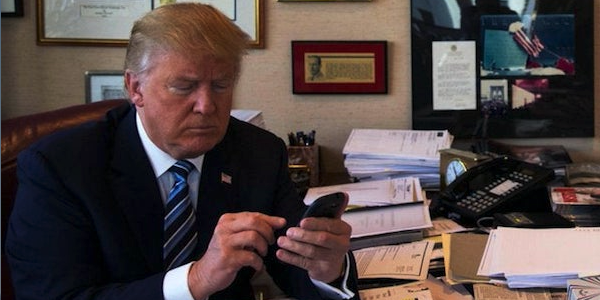Developing a Trumptweet investment strategy
On August 1, President Trump sent four tweets about China. With tweet three, which talked about additional tariffs on US$300 billion of goods exported from China to the US, Trump rocked markets by publicly escalating trade war rhetoric.
Traditional conventions-whether they be predictable diplomacy or even minimum levels of civility-have gone out the White House window.
With the standard protocols of foreign relations and domestic political communication shattered, investors have to deal with more frequent and unpredictable political interludes than seemingly ever before.
Financial assets carry value, and normally, fundamental analysis can assess that value within a reasonable range. Market participants may move those prices up and down based on varying forecasts and the like, but generally, there is a connection between the market price and what we would call intrinsic value.
On the equity side, we know well that an extreme at one side of the price range can happen for longer than might be warranted. Ergo, John Maynard Keynes encapsulated these long-term extremes in his famous quote that, “The market can stay irrational longer than you can stay solvent.”
However, what “feels” different at the moment is that the political environment has joined the market in the extremes of its irrationality. In the current market environment, it certainly seems that “feelings” seem to often be outweighing facts at times.
How are portfolio managers, analysts, and clients to respond if this assessment is correct?
Options for Managing Through Volatility
1. It would be a violation of process to abandon an investment philosophy focused on identifying underlying value and opportunity. Trying to predict the next move in a game of 4-D chess is a loser’s battle.
That said, emotion is likely to be a formidable and tempting enemy. Even if it takes a while for rationality to carry the day from a policy perspective, underlying valuations do not change quickly, and market participants often overshoot fair value out of fear or greed, creating opportunity.
Note that this will require that all participants “trust the process,” something we are used to in Philadelphia! This level of trust also requires investors to accept higher volatility and underperformance in the short term. The alternative-capitulating to fear despite underlying fundamentals-is almost certainly an objectively bad outcome.
2. Chasing lower volatility is unlikely to be a good course of action for long-term investors. Studies of investor behaviour, most recently with exchange-traded funds, continue to show that what investors pour money into often underperforms in subsequent time periods.
When thinking about this conventional wisdom as it relates to current market fundamentals, “defensive” sectors are at historic extremes from a valuation standpoint and may ultimately be a terrible place to hide.
Perhaps defensive stocks will be a good place to seek refuge if a blind run to traditional areas holds form, but they’ve never traded at such extremes. At some point, valuations do get too high, and the incremental buyer disappears.
3. One step worthy of consideration is keeping dry powder on hand, possibly by not going “all-in” on assets that are likely to be highly correlated in one direction. This is true within portfolios as well as in asset allocation. As an example of the latter, private equity allocations may avoid short-term volatility through lock-ups and longer timeframes, but an overallocation to private equity-or any other asset class-might end up with tremendous exposure to a large change in the economy, regulatory rules, new legislation targeted at the industry, or other factors.
Goodbye Convention, Hello Threaded Tweets…
The “new normal” right now almost certainly is increased political divisiveness in the U.S., and for at least the next 16 months, we will likely have policy-by-tweet and diplomacy-by-tweet as a regular occurrence. In that environment, the balance between underlying fundamentals and unpredictable events is likely to be shaken.
This shift in the policy paradigm means that all participants-including investment managers and clients-may have to accept more uncertainty and market movement than they’d ordinarily like.
Patrick S Kaser is managing director and portfolio manager at Brandywine Global, a Legg Mason affiliate.










